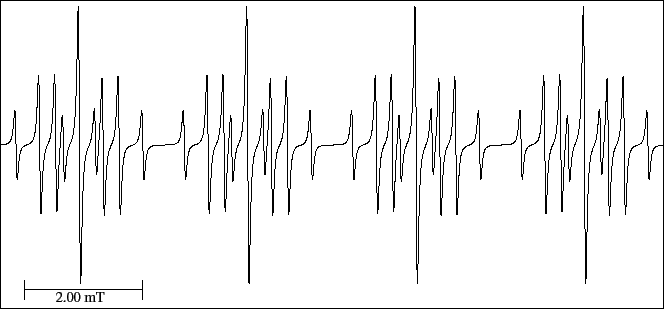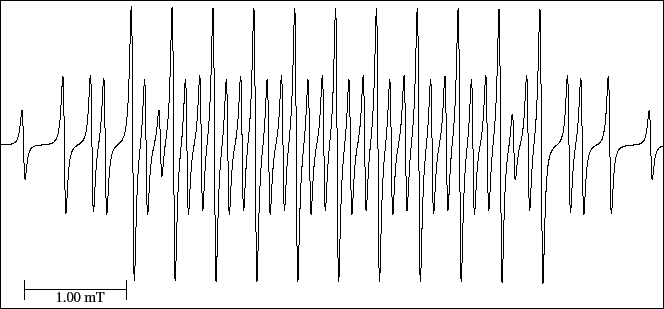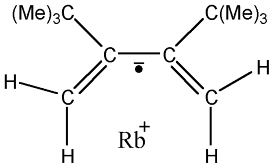



Next: 8.2.11 Nitrobenzene anion radical
Up: 8.2 Radicals containing r
Previous: 8.2.9 Cs(I) complex with
Contents
8.2.10 Rb(I) complex with 2,3-di-tert-butyl 1,3-diene anion radical [a032] and [a033]
Rubidium has been used to form a complex analogous to that presented in the previous section.
The Rb has two isotopes of atomic weight 85 and 87 (to see section 8.2.8).
The spectra obtained with each of these isotopes are shown in the Figs. 37 and 38.
The hyperfine splitting of the hydrogens in positions 1 and 4 is the same than that of the radical formed with Cs (I)
(Fig. 36).
Figure 37:
Rb(I) complex with 2,3-di-tert-butyl 1,3-diene anion radical.
 |
Figure 38:
Rb(I) complex with 2,3-di-tert-butyl 1,3-diene anion radical.
 |
[Exercise]
- Calculate the number of theoretical lines of the spectrum keeping in mind the value of the spin for
 Rb
and for
Rb
and for  Rb.
Rb.
- Count the number of experimental lines of the two spectra.
- Assign each spectrum to its corresponding isotope.
- Interpret both spectra keeping in mind that the triplet hyperfine splitting is the same than that
measured for the complex with Cs
 .
.
- Print the two simulated spectra.
- Include in the laboratory notebook the three simulated spectra, that of the complex of Cs and the two of Rb.




Next: 8.2.11 Nitrobenzene anion radical
Up: 8.2 Radicals containing r
Previous: 8.2.9 Cs(I) complex with
Contents
Universidad Autónoma de Madrid, Departamento de Química Física Aplicada

